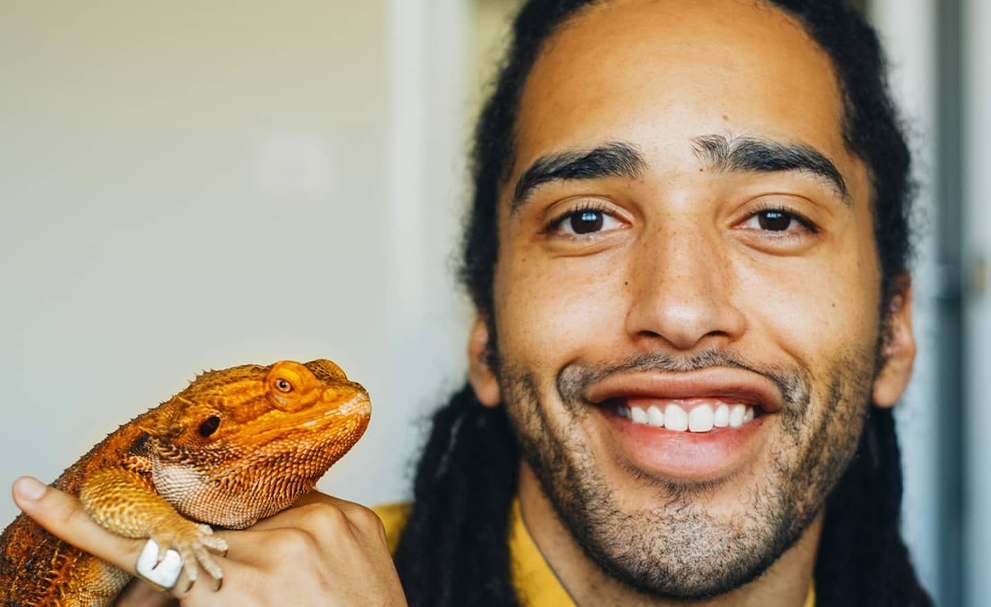The veterinary voice for animal welfare: reflecting on BVA’s updated Animal Welfare Strategy
11 Jul 2025
14 Apr 2021 | Fabian George Blake Rivers
With an apparent rise in exotic species being kept as pets in the UK, exotics and small animal vet, Fabian Rivers looks at whether it’s time for the veterinary community at large to bolster its exotics knowledge.

Working with exotic animals is a privilege. Seeing so many amazing, uniquely wonderful species is one of the most rewarding parts of my job. I can’t quite imagine a life without this as part of my practice.
Exotic animals have been a feature of British culture for a long time. Tortoises in the garden, budgies in a cage, and rabbits out in the run are all things that are not recent phenomena. However, what does seem to be an increasing trend is how many more varied exotic animals are becoming a staple of the landscape of ‘pet ownership’. With that increased popularity, due to social media, dropping purchase prices, general lack of education and legal framework for exotics, we are seeing more and more coming into our practices, all over the UK. As a small animal and exotics vet, my work (like any other vet) is often cemented in the basics. What type of food should this animal be eating? How often and when? What’s the temperature that this animal is occupying? Does it have access to fresh water and companionship?
We are lucky within the veterinary community to have a great support network, and can refer cases onto a specialist in that species or area. A fluid, caring flow of ideas, suggestions and expertise is essential, and this should certainly be built on.
As an exotics vet, what I often find is that there isn’t always a typically ‘tricky’ case. Rarely am I referred cases such as a complex feather-plucking macaw with aspergillosis, or a kidney diseased monitor lizard. Dare I say, it’s often pain relief and fluids, a discussion about seed diet or similar- this is often where it starts. We as GP vets deal with far more complicated cases day in day out.
When other veterinary practices get in touch for support with a case, they often cite feelings such as panic, and it really isn’t their fault either. The exotics basis at university level, in many places, is sometimes seen as cursory. Interest often goes beyond the classroom and in an academic sense, starts when you are in practice, and not *often* in the places where we hone our day one skillset. The irony is that every year, I myself, and I am sure many other exotic-friendly practices, see so many graduates, excited to be somehow involved with this line of work. I would even stick my head out and say it’s in demand, but the opportunities still remain to be limited.
Being up to date with the flurry of new research on just a couple of species can feel like an uphill battle. Things can, and do, turn on a knife edge and this also goes for anyone who is interested in exotics. It can feel like a perilous situation because half of the suggestions are extrapolated or come with small sample sizes. But, whilst your exotics vets chase better practice as much as the next person, the bread and butter of exotics work often remains in simple concepts with simpler remedies. You can do a huge amount with very little. (Yes, I am still trying to get my practice to buy me new toys to try!).
I feel like as exotic pet ownership becomes more prevalent, a greater legally robust distinction to what can and cannot happen should be present. As it stands, legal restrictions on trade in exotic species is effectively non-existent. As a result, the methods of purchasing, breeding and requirement of knowledge for these species is unrestricted. Non-mammalian species in particular present a profound concern for the immediate and future trade in exotic animals.
Alongside this issue, these animals are by nature, wild animals. If there isn’t the educational and legal framework to provide suitable enrichment, support and husbandry, we are failing to protect their physiological and quality of life requirements.
There is a novelty to our diversifying workload. Many vets love our careers because of the variety of cases we see daily and this only promises to make our jobs even more atypical. As awkward as it sounds, I don't see myself able to go into sole companion animal work, and that’s because the caseload I have at the moment is just so varied. I like to think of it as an opportunity and not a burden, especially as the discipline becomes just as popular.
The key point here is that we have to find space to absorb this demand. Accommodate, adapt and learn how or what that entails. And so, the onus has to be on all parts of the community to prioritise these areas. Courses such as GPCert and CertAVP are formalised attempts at furthering knowledge, but taking advanced CPD courses should also be encouraged.
In my opinion, this process should start at university level and not stop there. More universal recognition of the space that these animals occupy in British culture now is just as important. With this recognition hopefully comes more emphasis on wider education for all of us.
There is so much you can do as a vet of any clinical skillset which can be transferred neatly over to reptiles, birds, small furries. It doesn’t just have to be enrofloxacin and see you in 14 days… I promise!
Get tailored news in your inbox and online, plus access to our journals, resources and support services, join the BVA.
Join Us Today